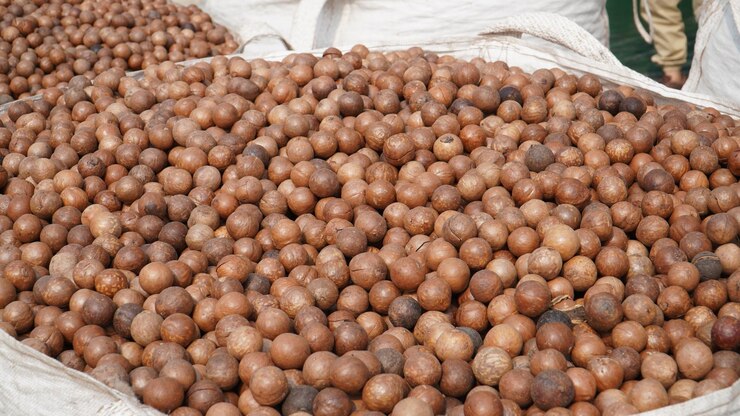South Africa has established itself as one of the top producers and exporters of macadamia nuts in the world, boasting a reputation for producing high-quality nuts. With the growing global demand for healthy snacks and plant-based products, South African macadamias have become increasingly popular in various export markets. In this article, we explore the key export markets for South African macadamias, the driving factors behind their success, and the future trends that shape the industry.
South Africa’s Position in the Global Macadamia Market
South Africa is currently the largest exporter of macadamias globally, accounting for around 40% of the world’s macadamia exports. The country’s favorable climate, combined with extensive agricultural expertise, has made it an ideal location for growing macadamia trees. As a result, the South African macadamia industry has witnessed rapid growth over the past decade, with production steadily increasing to meet the rising global demand for these nuts.
Macadamias are grown primarily in regions such as Mpumalanga, Limpopo, and parts of the Eastern Cape, where the warm climate and rich soils provide optimal growing conditions. The country’s focus on sustainable farming practices, coupled with its excellent post-harvest handling systems, has contributed to the production of high-quality nuts that meet the rigorous standards of international markets.
Key Export Markets for South African Macadamias
The global demand for macadamias is expected to continue growing, driven by factors such as increasing health consciousness, the popularity of plant-based diets, and the rising use of macadamias in various food products. South Africa’s macadamia exports are directed to several key markets, with the largest buyers being:
1. China
China has emerged as a significant consumer of macadamias, and it has become one of South Africa’s largest export destinations for these nuts. The growing middle class and an increasing awareness of the health benefits of macadamias have made China an attractive market. Macadamia nuts are increasingly being used as snacks and incorporated into various Chinese cuisines and baked goods.
In addition to its consumption market, China serves as a key re-export hub, where South African macadamias are often processed and repackaged for further export to other parts of Asia. With China’s rapidly expanding demand, South African macadamia farmers can look forward to continued growth in this market.
2. United States
The United States is one of the largest consumers of macadamia nuts worldwide. Macadamias are highly popular in the U.S. market due to their association with healthy lifestyles, as they are rich in monounsaturated fats, fiber, and antioxidants. They are used in a variety of products, including snacks, chocolates, ice creams, and even in savory dishes.
South Africa’s high-quality macadamias are highly valued in the U.S. market, where they are often sold as premium products. American consumers are increasingly looking for nuts that are ethically sourced and sustainably grown, and South Africa’s macadamia industry has positioned itself well to meet these demands.
3. Europe
Europe is a traditional market for South African macadamias, with countries such as Germany, the United Kingdom, and the Netherlands leading the charge. The European market is driven by the increasing demand for health-conscious snack options, vegan and vegetarian diets, and sustainable agricultural practices.
South African macadamias are favored in the European Union for their quality and adherence to organic and fair-trade standards. The nuts are primarily sold as raw, roasted, or processed into various consumer products such as macadamia butter, macadamia oil, and nut mixes.
The European market also has a growing demand for macadamias in the food manufacturing sector. Macadamia nuts are increasingly used in bakery products, confectionery, and plant-based alternatives, which is expected to further fuel growth in the coming years.
4. Middle East
The Middle East is another emerging market for South African macadamias, with countries like the United Arab Emirates, Saudi Arabia, and Qatar showing an increasing preference for premium nuts and dried fruits. The region’s growing demand for high-quality snacks, particularly among affluent consumers, presents significant opportunities for South African macadamia exports.
In addition to consumer demand, macadamias are increasingly being incorporated into local cuisine and desserts, making them a popular choice for luxury food products. The Middle East’s well-established trading networks further bolster the prospects for macadamia exports from South Africa to this region.
5. Australia
Despite being the birthplace of the macadamia nut, Australia is also an important export market for South African macadamias. The Australian market is highly competitive, with local producers also growing macadamia nuts, but South Africa’s position as a lower-cost producer gives it a competitive edge.
Australian consumers are keen on health-conscious food options, and macadamias are popular as snacks, as well as in cooking and baking. South Africa’s strong export presence in Australia is driven by price competitiveness and its ability to provide large volumes of high-quality nuts.
Trends Shaping the South African Macadamia Export Market
1. Health and Wellness
The global trend towards health-conscious eating continues to drive demand for macadamias. Packed with nutrients such as healthy fats, vitamins, and antioxidants, macadamias are seen as a valuable addition to diets focused on heart health, weight management, and overall wellness. As consumers increasingly seek out plant-based, nutritious snacks, the demand for macadamia nuts in both raw and processed forms is expected to continue rising.
2. Sustainability and Ethical Sourcing
As consumers become more aware of environmental issues, sustainable and ethical sourcing of agricultural products is gaining significant traction. South African macadamia producers are increasingly embracing sustainable farming practices, including water conservation, organic production, and fair-trade certification. These practices not only contribute to environmental preservation but also appeal to consumers who prioritize responsible sourcing.
3. Value-Added Products
While whole nuts continue to dominate the market, there is a rising demand for value-added macadamia products. These include macadamia butter, oil, and flour, which have gained popularity in the health food sector. The versatility of macadamias in cooking, baking, and food manufacturing presents an opportunity for South African producers to diversify their offerings and target niche markets.
Challenges and Opportunities
While South African macadamia exports are poised for continued growth, the industry faces challenges such as fluctuating global demand, competition from other producers, and logistical hurdles related to transportation and packaging. However, these challenges present opportunities for innovation and collaboration within the industry. By focusing on sustainability, quality, and product diversification, South African producers can continue to expand their presence in global markets.
The global demand for macadamias is set to grow, and South Africa is well-positioned to capitalize on this trend due to its established reputation for producing high-quality nuts. Key export markets such as China, the United States, Europe, the Middle East, and Australia offer promising opportunities for growth, driven by trends in health, sustainability, and the increasing popularity of plant-based foods. With continued focus on quality and innovation, South African macadamia producers can continue to lead the global market and meet the evolving needs of consumers worldwide.
Join 'Farmers Mag' WhatsApp Channel
Get the latest Farming news and tips delivered straight to your WhatsApp
CLICK HERE TO JOIN






